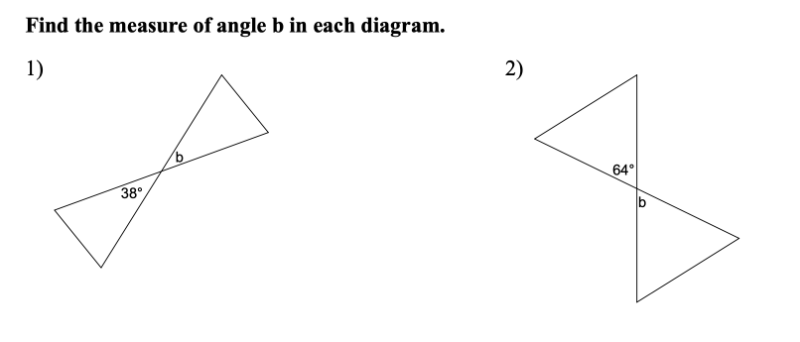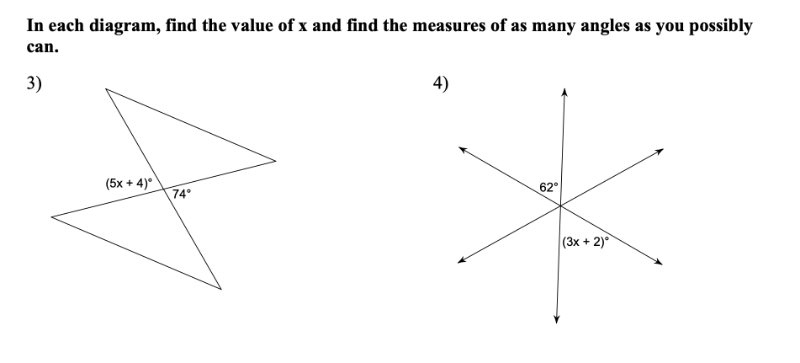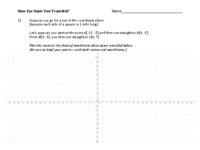
Vertical Angles Exploration (1)
Interact with this app for a few minutes. Be sure to drag the LARGE POINT around and be sure to move the 2 sliders you see.
Notice anything interesting? Describe as best as you can.
What happens if you make the size of the [b][color=#ff00ff]angle[/color][/b] BIGGER or smaller? [br][br][b][color=#ff00ff](You can change the size of the manila angle by using the manila-colored slider). [/color][/b]Does your response to the question above change? Why? Why not? Describe.


Special Pair of Lines in the Coordinate Plane
In the applet below, feel free to move [b]ANY LARGE POINT[/b] anywhere you'd like [b]AT ANY TIME. [/b][br][br]Interact with this app for a few minutes. Be sure to tamper with all sliders and be sure to move the LARGE POINTS around. After doing so, please reflect on these dynamics by answering the few questions that follow.
1.
Press the reset button. Slide the long black slider slowly (once again) and stop it at the exact moment the [b][color=#ff00ff]2nd pink angle[/color][/b] reaches the 2nd line. [br][br]What does the action of the [b][color=#ff00ff]pink angles[/color][/b] imply about both black lines? [br]How/why do you know this to be true?
2.
Now resume sliding the slider where you left off in question (2) above. [br][br][b]What does the motion of the 2nd right triangle imply about both black lines? [/b]
3.
What causes the right triangle (that appears) to [b][color=#0000ff]turn blue[/color][/b]? What causes it to [b][color=#ff0000]turn red[/color][/b]? Please describe as best as you can.
4.
Write a conditional (a statement of the form "If _____, then _____") that describes the phenomena through which you've just dynamically interacted.
5.
If we formed the converse ("flip") of the conditional ("If _____, then _____") statement you wrote for (4), would that statement always be true? That is, if you swap both hypothesis and conclusion of the statement you wrote for (4), would this statement be true? Why? Why not? Explain.
YOUR Linear Speed?
[b]Students:[/b][br][br]Use this applet to help you complete the [i][color=#0000ff]How Fast Are You Spinning?[/color] [/i]investigation given to you at the beginning of class. [br][br]Some key questions to consider are listed below the applet.
1.
According to NASA's website, what is the Earth's mean equatorial radius?
2.
According to your answer for (1), what would Earth's circumference be?
3.
What would the linear speed of a person who lives on the Equator be? (Round your answer to the nearest 10 miles per hour).
4.
What is YOUR current latitude? (For Southern Hemisphere users, use a negative number. For Northern Hemisphere users, use a positive number.) .
5.
Use your answer for (3) and your result for (4) to determine YOUR LINEAR SPEED in miles/hr. (Round to the nearest 10 miles per hour). For a hint, interact with the applet above.

